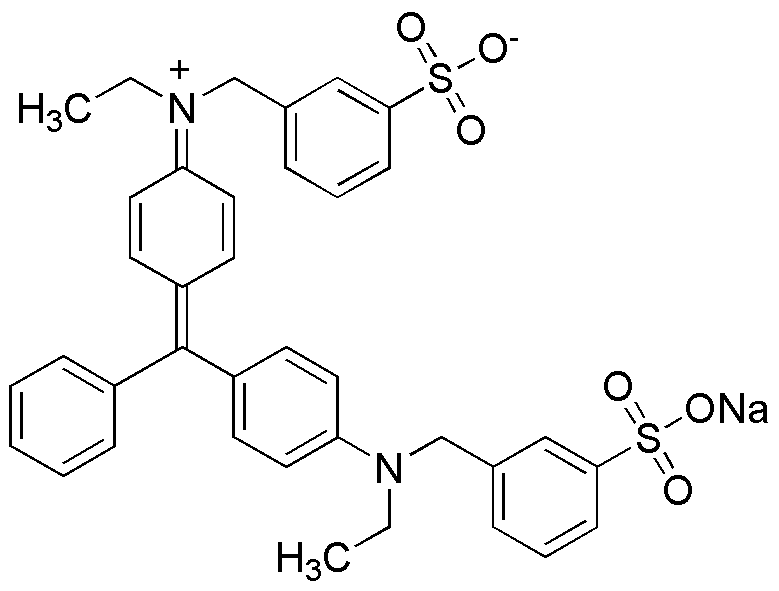Guinea Green B is widely utilized in research focused on:
- Textile Industry: This chemical is commonly used as a dye for fabrics, providing vibrant colors that are resistant to fading, making it ideal for clothing and upholstery.
- Biological Staining: In laboratories, it serves as a vital stain for microscopy, helping researchers visualize cellular structures and processes, which is crucial for biological studies.
- Histology: It is employed in histological applications to stain tissue samples, allowing for detailed examination under a microscope, which is essential in medical diagnostics.
- Environmental Monitoring: Guinea Green B can be used in water testing to detect the presence of certain pollutants, aiding in environmental protection efforts.
- Research and Development: The compound is utilized in various chemical research projects, particularly in developing new dyes and pigments, contributing to advancements in materials science.
General Information
Properties
Safety and Regulations
Applications
Guinea Green B is widely utilized in research focused on:
- Textile Industry: This chemical is commonly used as a dye for fabrics, providing vibrant colors that are resistant to fading, making it ideal for clothing and upholstery.
- Biological Staining: In laboratories, it serves as a vital stain for microscopy, helping researchers visualize cellular structures and processes, which is crucial for biological studies.
- Histology: It is employed in histological applications to stain tissue samples, allowing for detailed examination under a microscope, which is essential in medical diagnostics.
- Environmental Monitoring: Guinea Green B can be used in water testing to detect the presence of certain pollutants, aiding in environmental protection efforts.
- Research and Development: The compound is utilized in various chemical research projects, particularly in developing new dyes and pigments, contributing to advancements in materials science.
Documents
Safety Data Sheets (SDS)
The SDS provides comprehensive safety information on handling, storage, and disposal of the product.
Product Specification (PS)
The PS provides a comprehensive breakdown of the product’s properties, including chemical composition, physical state, purity, and storage requirements. It also details acceptable quality ranges and the product's intended applications.
Certificates of Analysis (COA)
Search for Certificates of Analysis (COA) by entering the products Lot Number. Lot and Batch Numbers can be found on a product’s label following the words ‘Lot’ or ‘Batch’.
*Catalog Number
*Lot Number
Certificates Of Origin (COO)
This COO confirms the country where the product was manufactured, and also details the materials and components used in it and whether it is derived from natural, synthetic, or other specific sources. This certificate may be required for customs, trade, and regulatory compliance.
*Catalog Number
*Lot Number
Safety Data Sheets (SDS)
The SDS provides comprehensive safety information on handling, storage, and disposal of the product.
DownloadProduct Specification (PS)
The PS provides a comprehensive breakdown of the product’s properties, including chemical composition, physical state, purity, and storage requirements. It also details acceptable quality ranges and the product's intended applications.
DownloadCertificates of Analysis (COA)
Search for Certificates of Analysis (COA) by entering the products Lot Number. Lot and Batch Numbers can be found on a product’s label following the words ‘Lot’ or ‘Batch’.
*Catalog Number
*Lot Number
Certificates Of Origin (COO)
This COO confirms the country where the product was manufactured, and also details the materials and components used in it and whether it is derived from natural, synthetic, or other specific sources. This certificate may be required for customs, trade, and regulatory compliance.


